Stunning photos of moms of color breastfeeding

They were riding the D Line bus in Seattle when baby got hungry. Mom pulled out her boob.
“On the bus, all these white people were around,” mom Sharayah Lane said. “I’m shaking and sweating, feeling really uncomfortable.”
She continued feeding her baby in public, Lane said, “to work through that in myself and try to understand why I’m feeling that way.”
Across the lake in Bellevue, Cynthia Anderson nursed her 1-year-old at daycare. The school director asked her to be more discreet because a parent had complained that Anderson had exposed herself.
“Was this a white person who was offended by my body?” Anderson said. The word "exposed" stuck with her. "It triggered my own insecurities around how some see my brown body."
In Gig Harbor, Candice Dunbar said some family members have balked when she breastfeeds in public. “I’m not a perv, so cover up,” older male relatives have told her.
Sponsored
These were some of the stories photographer Krista Welch and I heard this month when we interviewed and photographed nursing mothers of color. We embarked on this photo road trip because the numbers were stark: Women of color, especially black women, are far less likely to breastfeed than white women.
“A lot of things contribute to that disparity,” said Lane, who begins her master’s in public administration this fall at the University of Washington. “One of those is representation. If an image can be put out there for a woman of color who may be struggling with breastfeeding, or breastfeeding openly – that could be empowering to her.”
So that’s what we did. Here are photos of nine Seattle-area moms, all women of color, nursing their babies.
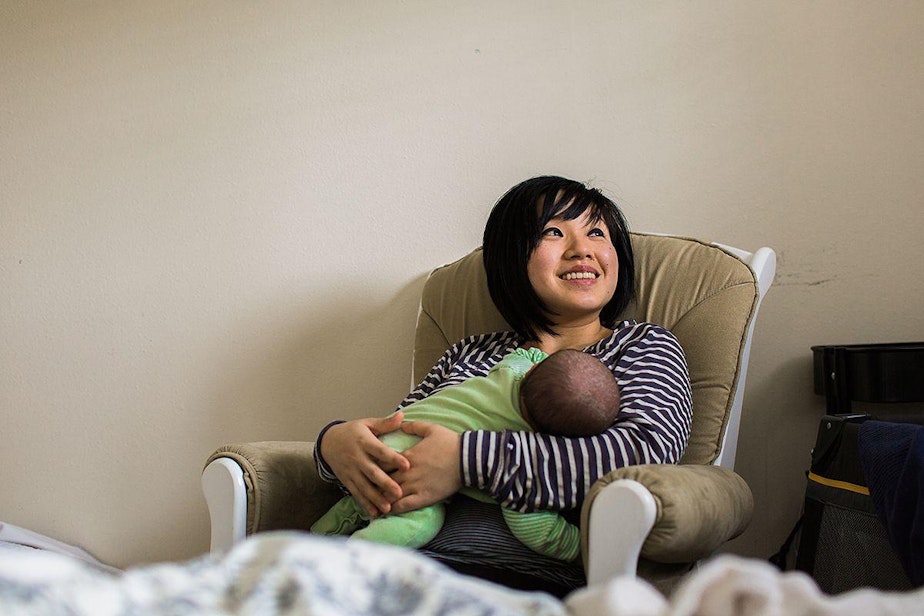
Angela Tam | Beacon Hill | Therapist
Angela Tam struggled to nurse her firstborn, Rosie. Support was hard to come by – in Chinese culture, the focus after childbirth is on feeding the mother, not the baby, and Tam held to a confinement diet heavy on ginger, pig’s feet and black vinegar.
Among the older generation of Chinese and Chinese-American women, Tam said, “Formula was a status symbol, viewed as superior.”
Five months into pumping milk to make bottles for her daughter, Tam gave up and posted her pumping supplies on Facebook. A lactation consultant, Camie Goldhammer, saw the post and invited her to a free drop-in breastfeeding clinic. With Goldhammer's help, Baby Rosie latched on.
Her story doesn’t end there: Rosie developed severe allergies. Her skin cracked and she had secondary staph infections. “I was so scared,” Tam said.
Tam reduced her own food to turkey, squash, olive and salt and slowly her daughter recovered.

Cynthia Anderson | Ballard | UW academic adviser
“We don’t see images of women of color,” said Cynthia Anderson.
When her first son was born at a downtown Seattle hospital, no lactation consultant paid her a visit. “I was speaking with a coworker, a white lady, who had seen multiple lactation consultants. They sent us home with formula.”
Later, a pediatrician told her, “It’s impossible for you to make enough milk to fill him up. It’s impossible for your body to do this.”
Anderson was devastated.
“We all make milk,” she said. “But I wasn’t the body that would be supported in doing that. That’s absolutely different from the women I know who are not women of color.”
When she made that first bottle, she cried. “I felt like my body let me down.”
And when she nursed, she covered herself at first. “I worried what other people would think about my body.”
Anderson was adopted at age 3 from Pakistan. Afghanistan and Pakistan were at war and parents were encouraged to place their daughters for adoption. Anderson and two of her sisters went to live with their new family in the U.S.
Anderson sings her sons songs that she learned in Urdu as a child. She returned to Pakistan several years ago to meet her birth mother and learned she had been a midwife.
“I was feeling pride that my birth mom did that for so many women,” she said. “Even though three of us had to leave her.”
Sponsored

Andrea Arai | Columbia City | Nanny
Andrea Arai, 29, breastfed her firstborn, Milla, until she was 2 ½ and hopes to nurse her second, Norah, even longer. Her own mother nursed her until she was 18 months.
But growing up, few other family members breastfed their babies. “A lot of my family was on welfare,” she said. “I grew up in the projects – High Point. My family didn’t stress it.”
Nursing didn’t come easily to her – Milla was born a few weeks early, and she was what Arai called “a lazy latcher.” She ended up with cracked nipples but she continued trying.

Sharayah Lane | Greenwood | Graduate student
When Sharayah Lane’s son was born, he came out so fast that fluid from his lungs were not pushed in the birth canal. Baby Ian ended up with a breathing tube in the neonatal intensive care unit, and Lane was told she couldn’t breastfeed because it would demand too much energy from him.
When a drop of colostrum – the first milk from a mom’s breast – emerged, she sucked it into a tiny syringe and fed it to him.
“He nodded off,” she said. “Every time we gave him colostrum, he had the same reaction. I saw the response. It was like, this is the real thing.”
Nursing was hard at first for Lane, who was raised on the Lummi reservation north of Seattle. Her nipples hurt and Ian had a tough time latching, as many babies do. When he finally did, she felt a combination of joy and excruciating pain.
She's received support from some relatives, less from others. One threw a blanket on her.
“She was offended,” Lane said. “She walked over to where I was sitting and said, ‘You better not be breastfeeding in front of my man. You need to cover up in front of him.'”
After that, Lane became more committed to public breastfeeding.
“Babies of color don’t get that start breastfeeding because of stigmas standing in the way,” she said. “I’m raising awareness, examining what are the underlying reasons to shame a woman for breastfeeding openly.”
On the Lummi reservation, relatives have supported breastfeeding. Lane gave her cousin three gallons of frozen breastmilk in three heavy bags.
“She knows it’s safe,” she said. “Within our community, it’s expected that you will breastfeed so long as you’re clean and sober.”
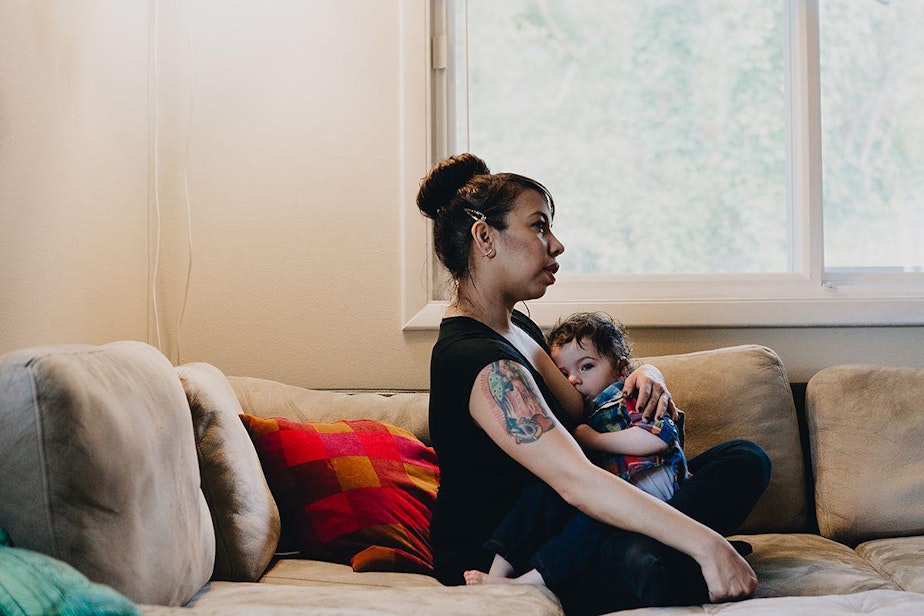
Nadia Rodriguez | Rainier Beach | Pilates instructor
Nadia Rodriguez, 39, continues to nurse her son, Rio, 20 months.
“I was lucky,” she said. “I didn’t have a hard time, and he didn’t have a hard time. I had colostrum before he was born, and he latched within five to 10 minutes of birth. That was amazing. That was after a 48-hour delivery, and I thought, ‘Thank god for this.’”
Rodriguez, who owns a Pilates studio in Pioneer Square, learned more about breastfeeding when studying public health in college. “I want more women of color to know the benefits of breastfeeding for baby and themselves,” she said.
“It can be hard initially, but breastfeeding provides significant health benefits for both mother and child, as well as enhanced opportunities for bonding and forming attachment."

Mari Hirabayashi | Rainier Beach | Marketing
Mari Hirabayashi found nursing support through various groups – PEPS, the Columbia City Stroller Brigade, a parenting Facebook group, and the midwives at Swedish. Nursing came easy with her first and her second. “I love the connection,” she said.
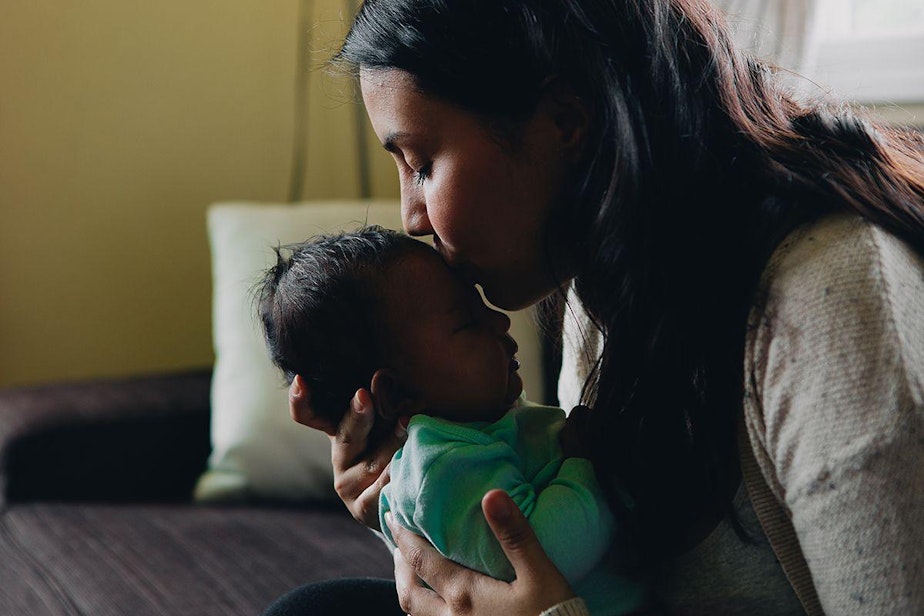
Sofia Voz Ford | Rainier Beach | Educator
Sofia Voz always wanted to nurse her baby, Vivian, now 9 weeks.
“It was never really a question,” she said. “I was nervous about being able to breastfeed because I heard about so many moms who had a hard time, but she came out of the womb with blisters on her fingers because she had sucked on them. She latched right away.”
Voz went to a drop-in lactation group in the neighborhood and was pleased to see that four of the five moms there were women of color. “That helped me feel a little more comfortable,” she said.
Feeling at ease as a woman of color in Seattle is something she thinks about increasingly. She moved here 10 years ago and has noticed her south end neighborhood change.
She said she participated in our photo shoot because she liked “that focus on women of color.”
“Look at the data – women of color who don’t breastfeed – it’s not for lack of wanting but having to go back to work full time,” she said.
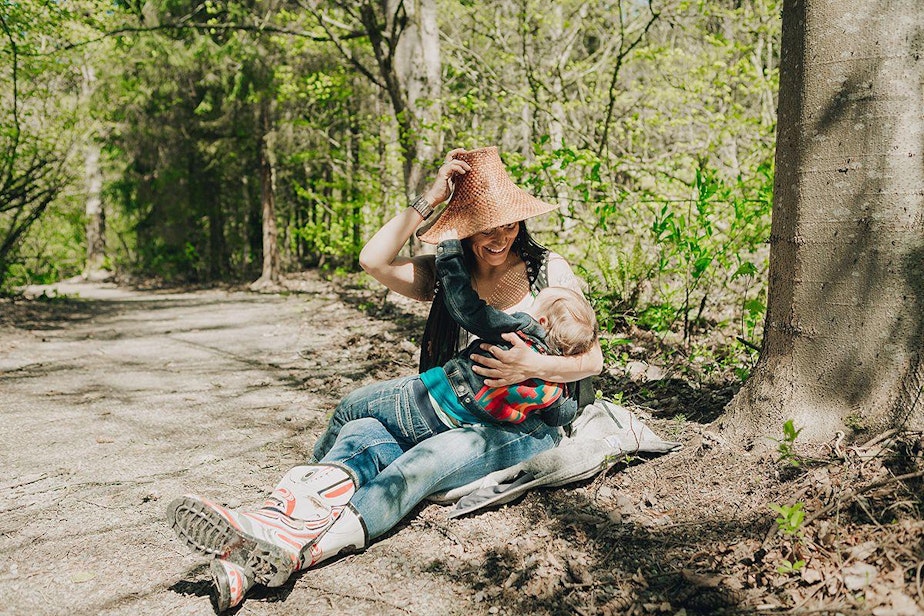
Solana Booth | Gig Harbor | Perinatal professional and filmmaker
Solana Booth is of the Nooksack, the Chief Dan George Family of Washington state, and part Alaskan Native Tsimshian Nation. She is committed to encouraging women to tell their birth stories: “All creation stories are about birth,” she says.
Booth’s own mother didn't nurse her – she had kidney problems and no support for breastfeeding.
A nurse at the Indian Health Board encouraged Booth to nurse her newborn daughter 18 years ago, when Booth was a teen mom. She ended up breastfeeding her daughter for more than four years. She came to see nursing as part of the old laws – what ancestors did to feed their children.
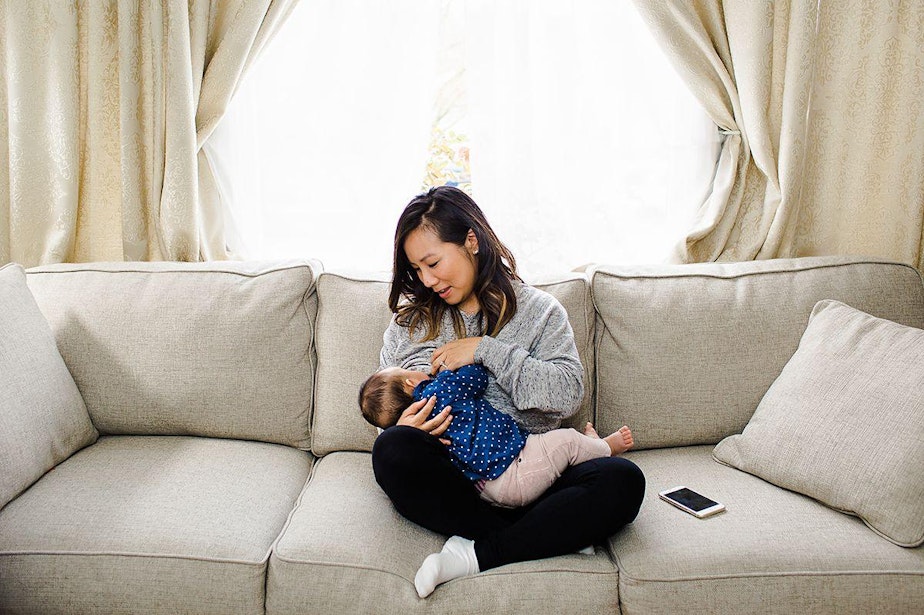
Kristen Su | Beacon Hill | Nurse practitioner
Kristen Su, 33, heard stories about her mom breastfeeding. Her mother returned to work when Su was six weeks old, pumping by hand at the Seattle bank where she worked.
Sue nursed her firstborn daughter for nine months. “I had to use formula and she’s fine – that’s fine too,” she said.

